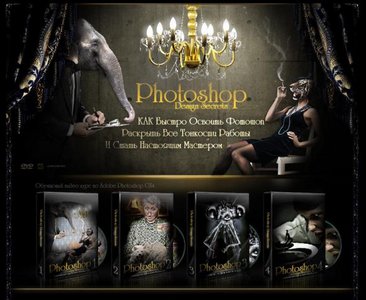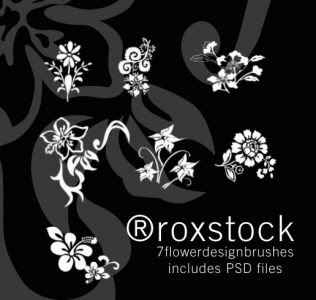This goes for all amateur and professional designers like you, you and all others that are more often than not making business marketing materials such as stickers, postcards and especially posters can now make use of the steps that is printed in this article for you to cut down on printing cost and especially on waste materials.
The sketching in Photoshop - most of the professional designers usually believes that the process of sketching is similar when it comes to traditional and digital art. The palette graphics of this program almost replicates the feeling of the drawing on paper materials. However, the drawing process in this program is not really as fast as the drawing process in paper materials. On the other side of the working sheet of this given program, you can make effects such as the halftones that cannot be drawn with the use of pencils and papers.
Working with the lower layer - always select a dominant dark type color that the secondary aspect can relate to without losing or decreasing the contrast in your print materials. It is a must for you to do this process so that you will not be lost in the details of all the given colors and images that is floating around your print materials.

Photoshop tutorials alone could not make you a successful graphic designer. Sure, you can probably know how to do basic photo manipulation but everything is in vain unless you have an idea on basic graphic design.
Graphic design is a process of incorporating the elements and principles of visual arts in order to achieve an aesthetically pleasing and functional effect. The functions vary per work. Aesthetics, as we all know, is subjective. It is safe to say then that there is no single formula for graphic design. The processes are not even consistent and would depend a lot on a designer's attitude, personality and motives.

For one, a novice Photoshop user should at least try to analyze his/her intended audience. This is done in order to determine the purpose of your message. You can create abstract visuals in painting but not in graphic design. Every work should function as expected. Part of achieving this is how you will relay the message. Simply put, you have to consider your medium. If it is a movie poster, where shall it be placed? If it is a web design, to whom will it cater?
Once you have determined all these, you can now envision how the design will look and feel like. You can organize your text and graphics based on that vision. Use the appropriate layout, typefaces, styles, formats, and spacing. You can manipulate each graphic element and the design altogether. It would depend a lot on your imagination. It is more dependable than Photoshop tutorials anyway.
Line. There are a variety of them and each has its own design function. Straight, curve, thick, thin, broken-what lines do, independently or when incorporated with other elements, is organize texts and graphics. It creates a visual path that will help your audience follow through the design. Lines give a sense of motion to the design. It directs the eyes of the spectator.
Shape. Psychologists have always been fascinated with shapes. Think: Rorschach inkblot test. You can make use of the same principle in your design. By knowing the audience, you will learn how to easily manipulate their thoughts on a visual stimulus of your own doing. Shape, more than any element, symbolizes ideas.


Texture. Another confusing thing about Photoshop tutorials is texture. The same question is often left hanging. These are easily understood once you already know your "emboss" from your "drop shadow." Visual texture also creates contrast and interest. It adds dimension and personality to the design. It provokes emotions and play on the spectator's eyes. Whenever you hear someone saying that a certain artwork seems alive, that is most probably the handiwork of texture manipulation.
Color. This is probably the easiest element to control in graphic design but is still oftentimes overlooked. Handling color is as simple as getting a color wheel and picking which color combination works together. But the tricky part here is learning color association and symbolism. Just like shapes, psychologists learned that colors evoke a certain behavior towards a spectator.
Ease of use
There are varieties of features that make Adobe Photoshop one of the best in the game. Primarily, this application has to be one of the most user-friendly programs ever created. There are several discussion boards and websites filled with video tutorials dedicated to Adobe Photoshop; beginners and seasoned users are always able to find answers to any problems or questions that they encounter.

Non-destructive editing is a feature that allows you to retouch photographs without ever touching the original image. This feature is not limited to photographs; it is also helpful for graphic designs. One of the advantages of non-destructive editing is that you can easily modify image effects and make various other adjustments to your project months after the first modifications. Non-destructive editing allows the user to make quick surface adjustments and makes editing more flexible, which makes the application that much more powerful.
State of the art editing tool set
One of the reasons why Photoshop is a standard among graphic design professionals is its image-editing capabilities. The software supports standard ICC color profiles and features advanced layering with masks, styles, shapes and adjustments. One of the coolest features of Photoshop's tool set is cloning, which allows you to remove unwanted items such as leaves or electric wires from pictures, even people! It also allows you to import components from other pictures into your images. Another powerful tool is the healing brush, which allows you to remove imperfections, such as wrinkles, scratches and scars from a person's face. Adobe Photoshop is unrivaled when it comes to its editing power.

There are several third party plug-INS available for Photoshop such as Digital Element's Aurora plug-IN, which allows users to add natural 3D elements to any 2D image such as skies with clouds, water reflections and lighting effects. The program also includes Carrara 5 by Eovia, which makes creating 3D illustrations and animations a breeze and Strata Foto3D by Strata Design, which allows you to generate 3D models from photographs shot with a standard digital camera. These are only some of the hundreds of plug-INS available that provide customers with the ability to add even more capabilities to their software application and enable them to improve this already impressive software application.
If these features, options, tools and plug-INS are not enough to convince you that Adobe Photoshop is the way to go when it comes to graphic design and image editing, there is a free trial version available at Adobe.com